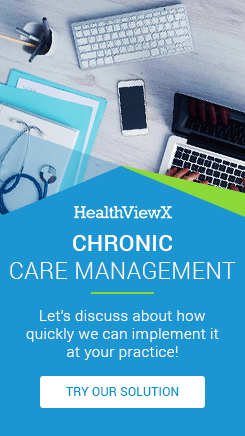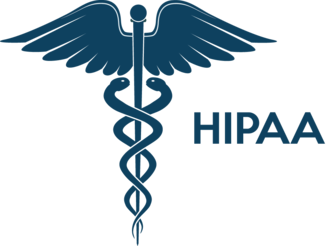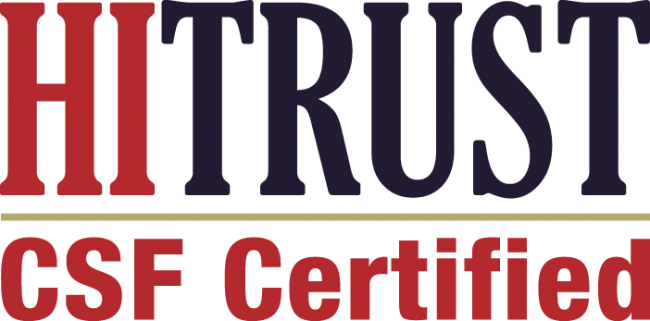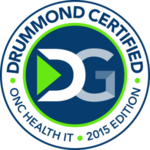Primary care is the front door to the U.S. health system but it’s chronically underfunded and operationally overstretched. In 2025, Medicare introduced Advanced Primary Care Management (APCM) Services to simplify payment, reduce fragmentation across overlapping care-management codes, and reward practices for truly comprehensive, team-based care. This post explains what APCM is, why it matters (with current stats), how it compares to previous primary-care models, and how the HealthViewX APCM application helps practices operationalize APCM at scale.
The case for change: why Medicare is elevating primary care
- The U.S. spends ~4.7% of total health spending on primary care, far below peers (≈14% in other high-income countries). The share has declined from 5.4% (2012) to 4.7% (2021), with Medicare’s primary-care share especially low. Under-investment correlates with poorer access and care coordination.
- Medicare enrollment is ~68 million (FY2024), and a majority choose Medicare Advantage (MA)—54% of eligible beneficiaries in 2024—intensifying the need for high-functioning primary care that manages risk and complexity.
- Traditional chronic care management (CCM) programs improved outcomes but were underused: only ~1.3M beneficiaries received CCM in 2023; studies show just 3–4% of eligible FFS beneficiaries received CCM in earlier years. Barriers included fragmentation across codes, coinsurance confusion, and documentation burden.
Bottom line: Medicare needed a simpler, more comprehensive payment and workflow construct for longitudinal primary care—hence APCM Services.
What is Medicare APCM?
In May 2025, CMS published Advanced Primary Care Management (APCM) Services, a bundled, monthly payment for comprehensive, team-based primary care. APCM packages multiple activities that used to be billed across separate codes (e.g., CCM, PCM, BHI) into one integrated service with consistent documentation and guardrails. Key points:
- Who can bill: Physicians and certain NPPs furnishing advanced primary care.
- Service structure: A single, monthly APCM bundle that includes longitudinal care management, care planning, coordination, patient and caregiver engagement, and population-health functions delivered by a primary-care team.
- Codes & payment: CMS established HCPCS G-codes (e.g., G0556–G0558) for APCM, with tiering based on patient complexity and team intensity. Only one practitioner bills per patient per month; APCM cannot be billed concurrently with overlapping care-management services for the same patient/month.
- Documentation essentials: Consent, attestation that requirements are met, individualized care plan, ongoing care-team activities, and a process for 24/7 access and continuity.
- Beneficiary cost sharing: Standard Part B cost-sharing applies, though practices should use clear financial counseling and supplemental benefits navigation to minimize surprise bills.
Why this matters: APCM streamlines billing and care delivery, reduces code confusion, and aligns with Medicare’s decade-long push toward comprehensive primary care.
How APCM relates to previous primary-care models
Medicare has piloted several primary-care models:
- Comprehensive Primary Care Plus (CPC+) (2017–2021): Reduced ED visits and acute hospitalizations, but did not achieve net savings after accounting for increased spending elsewhere and model payments. Practices valued care-management fees to fund care teams and BH integration.
- Primary Care First (PCF) (2021–2025): Nearly 3,000 practices, ~2M beneficiaries by 2022. Early years showed minimal effects on hospitalizations and expenditures; payments were generally more generous than FFS but perceived as insufficient by many practices.
- Making Care Primary (MCP) (planned 2024–2035): CMS ended the model early (June 30, 2025) and paused applications; participants are being supported in model transition planning.
APCM Services brings some of the best lessons from these models into the standard Physician Fee Schedule, simplifying adoption and scaling beyond limited-region pilots.
What “good” APCM looks like operationally
A high-performing APCM practice consistently demonstrates:
- Patient identification & stratification by clinical complexity, frailty, behavioral health needs, and social drivers of health (SDOH).
- Team-based workflows with clear role delineation (RN care managers, BH clinicians, pharmacists, and community health workers).
- Personalized, living care plans tied to guideline-concordant goals, meds, adherence, and self-management supports.
- Omnichannel engagement (phone, SMS, portal, home visits, telehealth) matched to patient preference and risk.
- Closed-loop coordination with specialists, hospitals, post-acute, community-based organizations.
- Clean documentation & compliant billing for the monthly APCM bundle; single-practitioner attribution per month; no overlap with CCM/PCM/BHI in the same month.
Deep dive: HealthViewX APCM application
HealthViewX was built for value-based, team-based care programs across Medicare’s suite (CCM, PCM, RPM, RTM, BHI, AWV, TCM). The HealthViewX APCM application combines those strengths into one operating system for APCM.
1) Risk stratification & patient targeting
- Multi-domain risk engine: Combines chronic conditions, utilization patterns, polypharmacy, frailty, BH flags, and SDOH to place beneficiaries into APCM-aligned intensity tiers.
- Attribution & eligibility: Automates panel attribution, checks for monthly conflicts (e.g., CCM/BHI already billed), and tracks consent status to avoid denials.
2) Care-plan builder and longitudinal management
- Condition templates + SMART goals for diabetes, CHF, COPD, CKD, depression/anxiety, chronic pain, polypharmacy, fall risk, etc.
- Dynamic “living” care plans: Update goals, barriers, and interventions after each contact; support caregiver participation; embed education and teach-back notes.
- Medication management: Pharmacist workflows, adherence monitoring, refill gaps, and MTM documentation.
3) Integrated behavioral health & SDOH
- BH screeners (PHQ-9, GAD-7), collaborative-care workflows, and warm handoffs.
- SDOH intake (food, housing, transport), community resource directory, and closed-loop referrals with outcome tracking.
4) Omnichannel outreach & access
- Cadence automation by risk tier (e.g., high-risk weekly check-ins, moderate monthly), 24/7 access pathways, and telehealth embedded.
- Patient engagement via SMS, IVR, email, and app/portal is documented automatically to the APCM encounter.
5) Documentation, compliance & billing for APCM
- APCM encounter “compiler” assembles all required elements (consent, care-plan status, team activities, availability & continuity attestations) into a single HCPCS G-code claim for the month (e.g., G0556–G0558, based on intensity).
- Claim-conflict guardrails detect and prevent concurrent billing of overlapping services in the same month.
- Audit trail with time-stamped notes, role-based sign-offs, and PFS-aligned attestation language to withstand payer reviews.
6) Data plumbing & interoperability
- One-click EHR connectors (FHIR APIs, CCD/C-CDA, HL7, Direct Secure Messaging) for problem lists, meds, labs, vitals, and encounters.
- Specialist & hospital ADT feeds trigger outreach after ED/inpatient events and coordinate transitions.
- Community partner integration for SDOH services and outcomes.
7) Analytics & performance management
- APCM dashboard: Enrollment, active panel by tier, outreach adherence, gaps closure, avoidable utilization, and patient-reported outcomes.
- Financials: Billed vs. paid, denial reasons, payer mix, expected revenue by tier, and scenario modeling to plan staffing and growth.
- Quality & equity: Disparity views (race/ethnicity, language, zip) and SDoH-adjusted performance tracking.
Implementation playbook (90 days)
- Readiness & revenue model (Weeks 0–2)
- Analyze panels, payer mix, and expected APCM tiers; model monthly revenue and staffing.
- Validate consent and financial-counseling workflows (Part B coinsurance expectations).
- Build the care team (Weeks 2–5)
- Assign RN care managers, BH clinician, pharmacist lead; define on-call/after-hours pathways.
- Configure escalations for high-risk flags (e.g., decompensation, med safety).
- Configure HealthViewX (Weeks 2–6)
- Turn on EHR/FHIR connectors; load risk models, and customize care-plan templates.
- Set outreach cadences by tier; configure the APCM monthly claim compiler and denial rules.
- Pilot with two pods (Weeks 6–10)
- Start with 300–500 beneficiaries; track contact cadence completion, patient experience, and clean claim rates.
- Hold weekly huddles to refine care-team workflows and documentation.
- Scale & optimize (Weeks 10–13)
- Expand panels; roll up analytics to service-line and executive dashboards.
- Use denial analytics and overlap detection to keep APCM clean and exclusive per Medicare rules.
What success looks like in year 1
- ≥65–75% of the eligible panel enrolled in APCM with documented consent.
- >92% clean-claim rate on first pass; denials mainly auto-resolved by rules engine.
- Material reductions in avoidable ED visits and readmissions for high-risk tiers (tracked quarterly).
- Patient-reported improvements (access, confidence in self-management, care coordination).
- Care-team retention & productivity improve as repetitive admin tasks move to automation.
Risks & how HealthViewX mitigates them
- Overlap/duplicate billing → Pre-claim conflict checks prevent submitting APCM with CCM/BHI/PCM in the same month.
- Documentation gaps → APCM compiler enforces required elements and embeds attestations.
- Coinsurance confusion → Built-in beneficiary financial counseling scripts and supplemental-benefit prompts aligned to plan type.
- Fragmented data → FHIR/ADT connectors and community-referral integrations close the loop.
Sources
- CMS: Advanced Primary Care Management (APCM) Services overview and billing rules, and Medicare.gov coverage description.
- CMS: Making Care Primary (MCP) Model early termination and transition FAQ (updated 2025).
- Mathematica: CPC+ Final Evaluation (Dec 2023).
- CMS/Mathematica: Primary Care First (PCF) Evaluation (2022/2025 updates).
- KFF: Medicare Advantage enrollment (Aug 2024).
- CMS FY2024 Financial Report: ~68M Medicare beneficiaries.
- Milbank & Commonwealth Fund: Primary care share of spending and international comparisons.
- CCM utilization and adoption: Avalere (2025), ASPE (2022), JAGS (2024).


